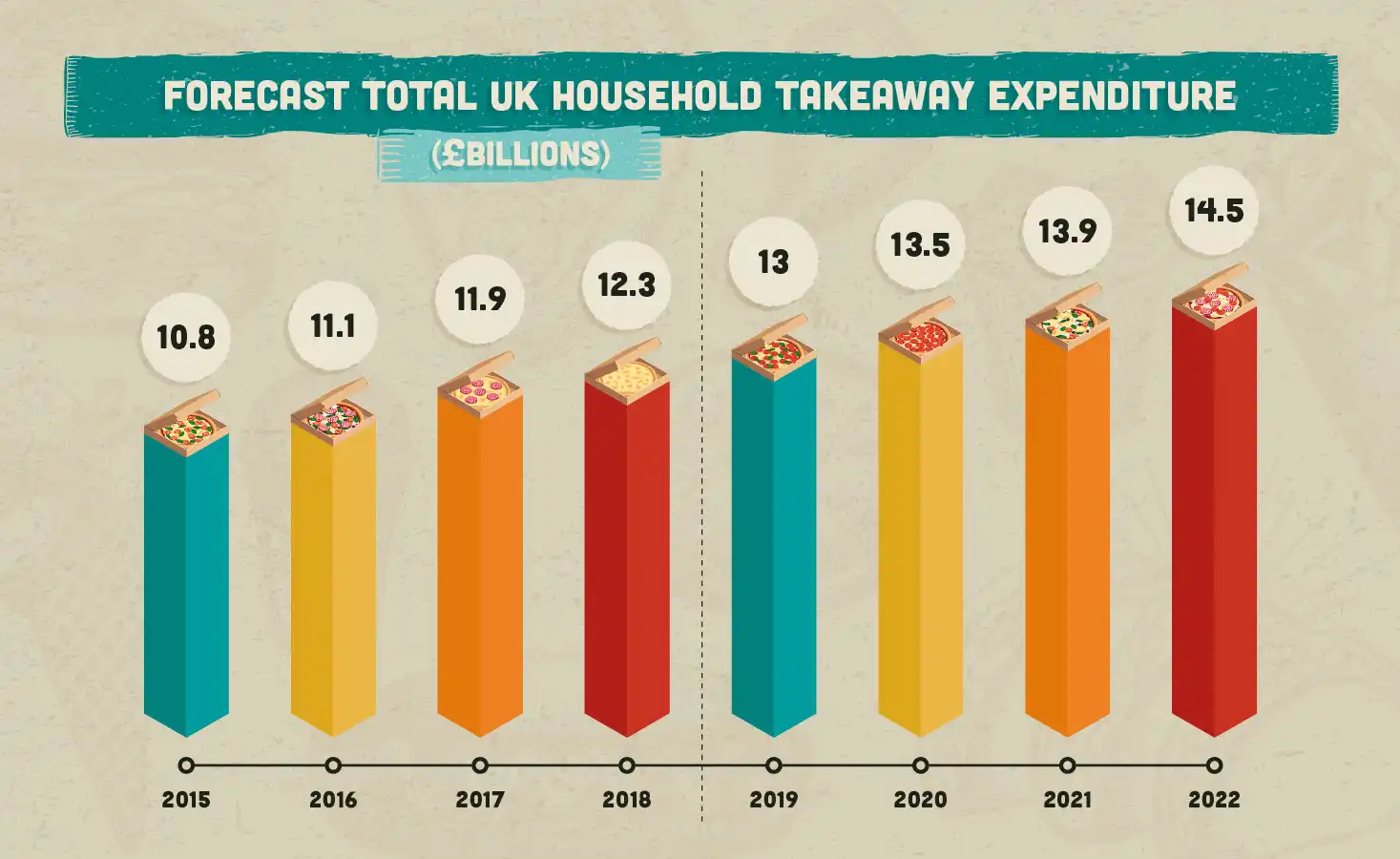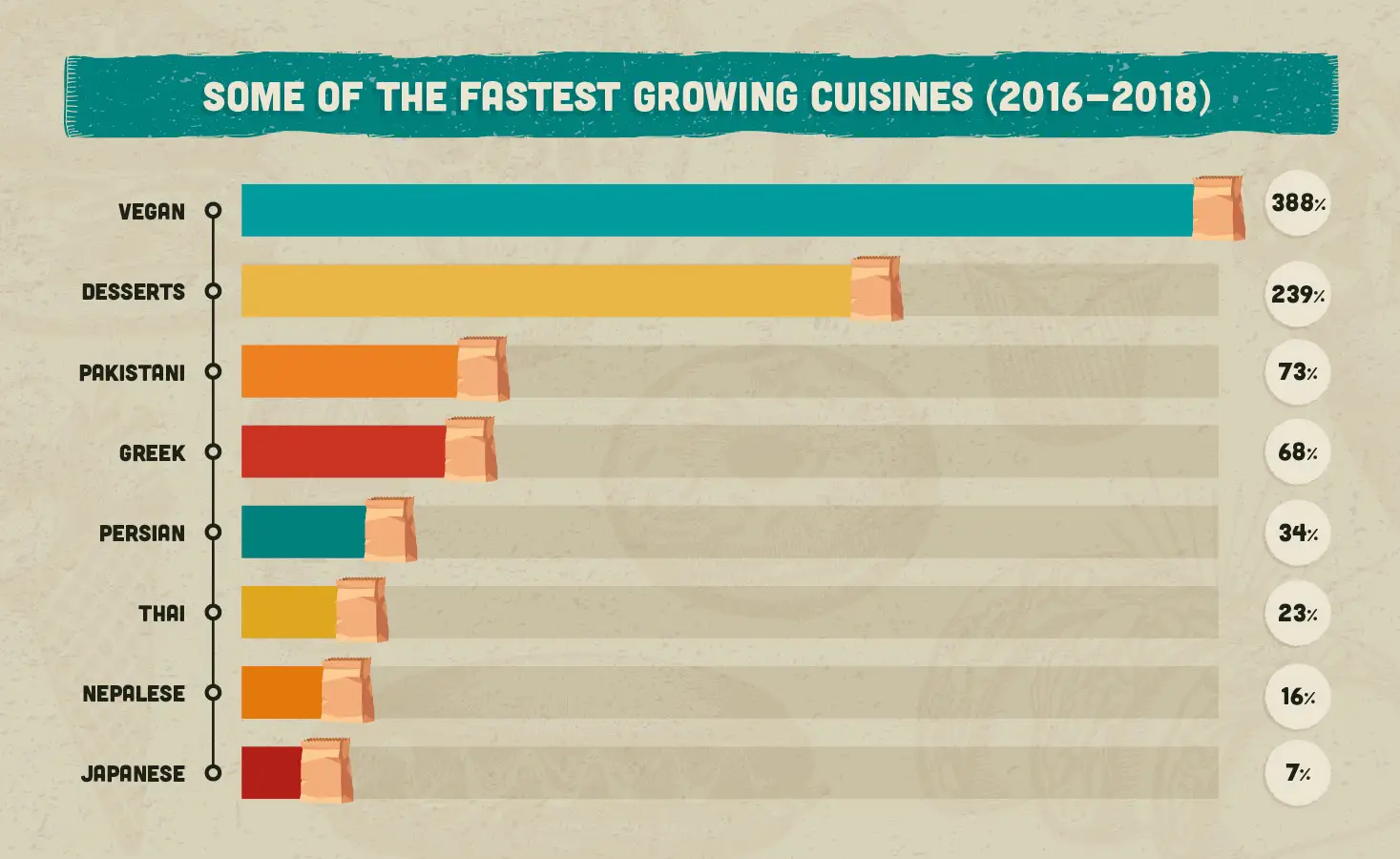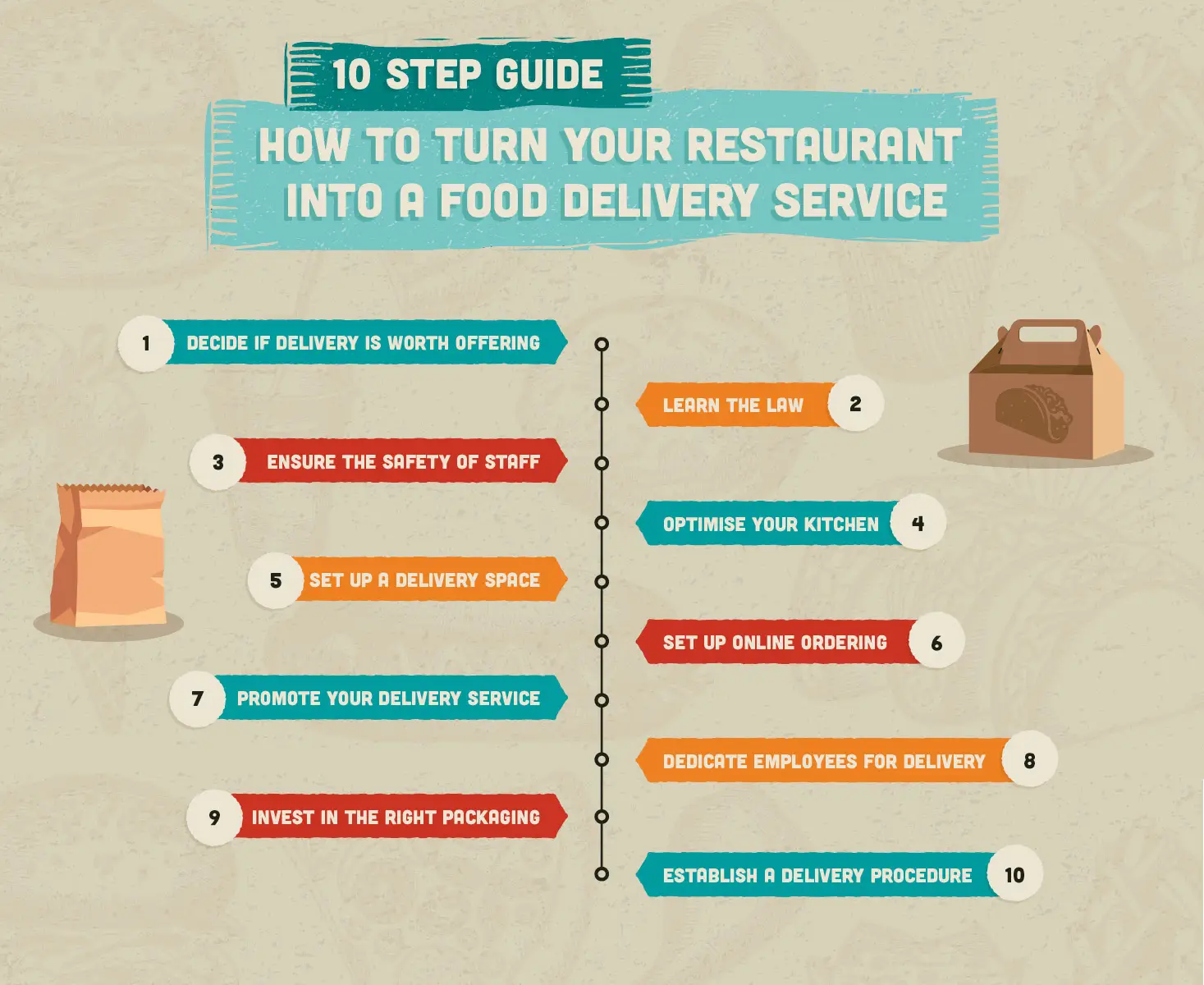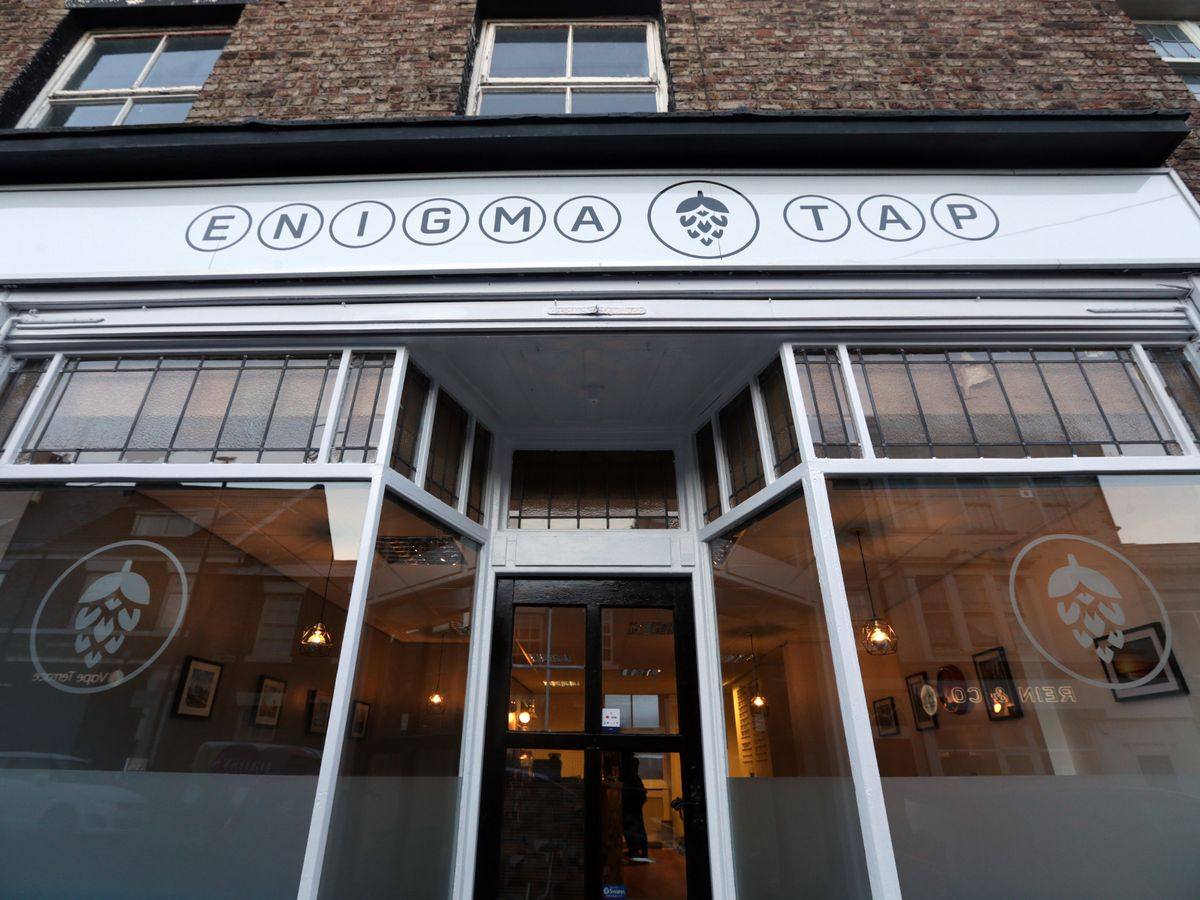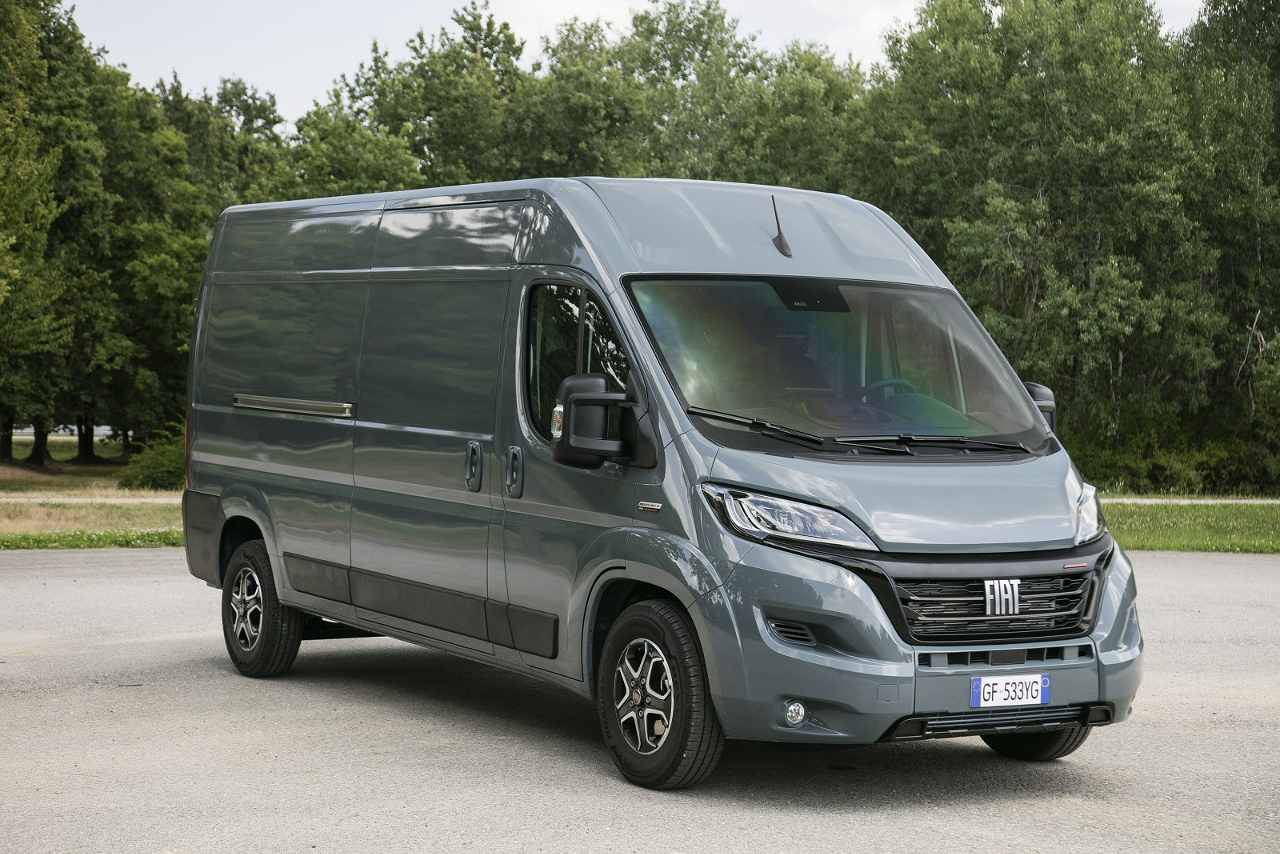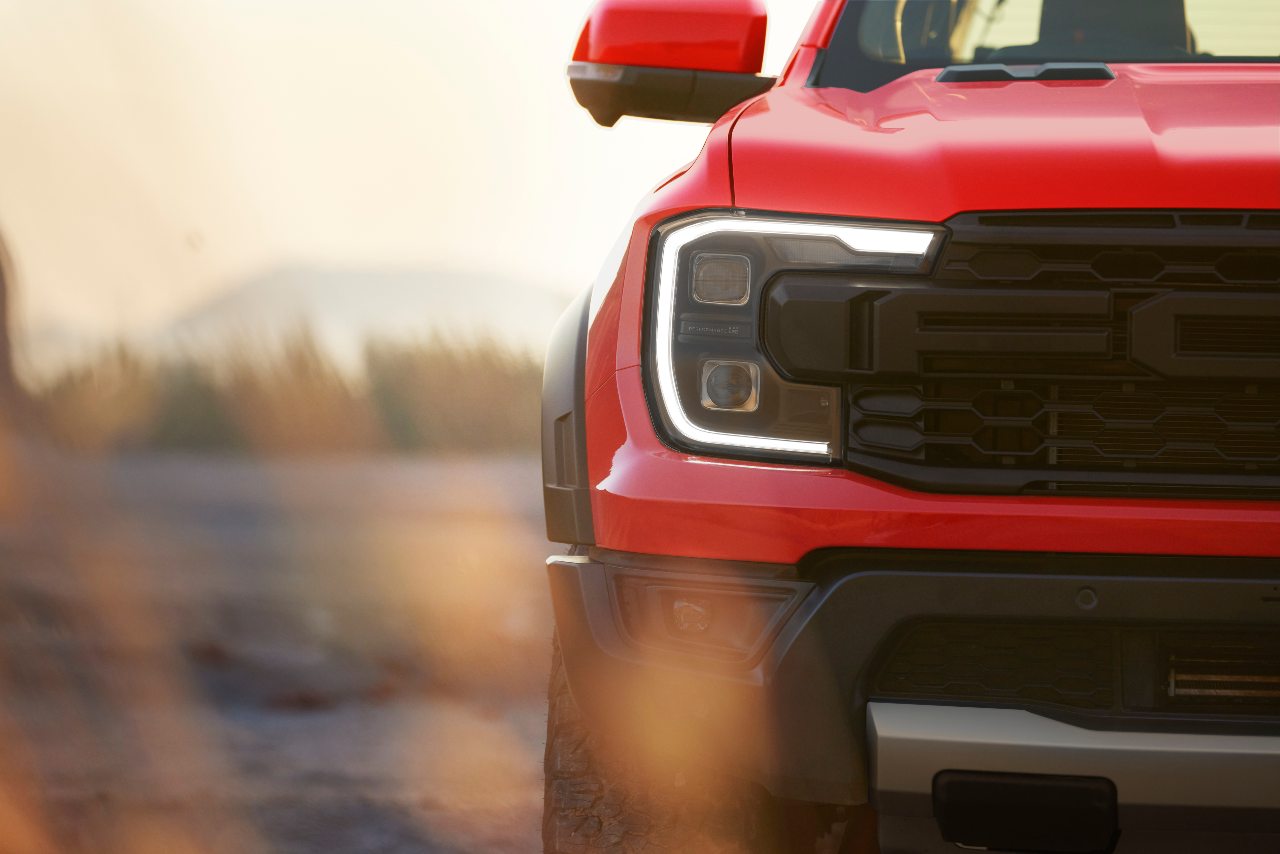The restaurant, pub and other hospitality industries have been some of the hardest hit during the coronavirus pandemic. The lockdown began on Monday 23rd March, and establishments that served food and alcohol were immediately asked to close. According to trade body UKHospitality, this has put up to 2 million jobs at risk in the hospitality sector. Owners have been faced with the hard choice of choosing between closing their dine-in facilities and offering delivery services only or shutting up shop completely.
Thankfully, the UK government relaxed planning permission restrictions previously preventing restaurants from offering a delivery option. This will enable them to still generate revenue during the COVID-19 pandemic. That's why Vanarama have created this helpful guide for would-be takeout owners to safely and quickly set up a delivery service at their establishment.
Food Delivery Industry: Cooking Up Growth
The takeaway sector in the UK has boomed in recent years, making it an attractive proposition for restaurants, pubs and other establishments to take advantage of during the coronavirus pandemic to supplement their revenue while in lockdown. The average household spent £38 per month on takeaways in 2018 according to the British Takeaway Campaign (BTC), that's a total of £12.3billion. Overall in the UK, expenditure on takeaways has increased by 15% since 2015 and is forecasted to continue rising for years to come. However, the pandemic may have some impact on these figures.
One of the reasons that food delivery continues to be a booming sector is the ever-increasing choice of food on offer, responding quickly to the changes in consumer appetites. According to BTC_, "_The diversity of choice when it comes to cuisines is greater than ever before and technological advancement means that consumers can order Vietnamese noodle soup, Kurdish kebabs, Kenyan barbeque or fish and chips at times and locations to suit busier and healthier lifestyles."
This is evidence that no matter the type food that you're offering, there will always be customers willing to try out new and interesting styles. During the coronavirus pandemic, there have been many local reports of restaurants and pubs being overwhelmed with orders as foodies look to support their local businesses, and of course, enjoy some good food while in lockdown.
How Lockdown Has Impacted UK Eating Habits
Vanarama contacted Just Eat to find out just how the coronavirus lockdown has impacted UK eating habits. Since lockdown began, approximately 3,000 takeaways have joined the Just Eat platform. Eating habits have also seen some change as people have settled into lockdown life. These include:
- Dinner orders starting up to 2.5hrs earlier, at 5pm.
- There's been a 36% rise in dessert orders - with chocolate fudge cake taking top spot.
- Families and housemates are coming together to eat more meals, more often - often placing larger orders as they choose to eat together rather than separately.
- Customers are opting for healthier options mid-week, with sushi, salads and grilled chicken proving popular for weekday lunches and suppers.
Whatever type of food you're serving up, the market for takeaway food has shown no signs of slowing down due to the lockdown. That's why we made this 10-step guide to help you offer delivery and your restaurant or pub.
10 Step Guide To Turn Your Restaurant Into A Food Delivery Service
Vanarama have put together a simple step-by-step guide on how turn your restaurant into a food delivery service.
1. Decide If Delivery Is Worth Offering
If this is the first time that your restaurant is thinking of offering delivery, it can be quite a substantial change from your normal dine-in operations. It may not make financial sense to offer the service in normal times. However, offering delivery to your customers may well help your business's cashflow during the current crisis we find ourselves in. Create a mini business plan to determine if it's right for you. Important things to consider before making your decision include does the type of food your offer lend itself to a takeaway-style service? What will your profit margin be? Is your supply chain stable?
2. Learn The Law
Due to the COVID-19 outbreak and the important role that delivery services will play in feeding the nation, on Wednesday 18th March, regulations were relaxed to allow restaurants, pubs and other establishments to offer delivery services. Christopher Pincher, the Minister of Housing said "The government will introduce a time limited permitted development right through secondary legislation (negative SI) to allow the temporary change of use of a pub (A4 – drinking establishment) and a restaurant (A3 – restaurants and cafes) to a hot-food takeaway for a period of up to 12 months only."
However, current laws regarding the preparation of food still have to be maintained. Under EU law Regulation (EC) No 178/2002, food sellers must ensure that:
- The food you sell or supply is safe (it is fit for human consumption and not injurious to health).
- You are able to identify the businesses from whom you have obtained food, ingredients or food-producing animals and the businesses you have supplied with products. You must be able to produce this information on demand. This is known as traceability.
- Unsafe food is withdrawn from sale or recalled from consumers if it has already been sold. The Food Standards Agency (FSA) and local authority must be notified.
- Labelling, advertising and presentation of food do not mislead consumers. Under the Food Information Regulations 2014, businesses have a responsibility to ensure food is labelled correctly.
3. Ensure The Safety Of Your Staff
Once you have established that your restaurant will be able to comply with the government's guidelines, it's important to ensure your staff's safety before going any further. Ensure that strict government guidelines are followed by each employee for their own safety, along with that of your customers:
- Wash hands every 15 minutes, using an alarm reminder system.
- Sanitise all hand contact surfaces (dispatch tables, doorknobs) every 30 mins.
- Deep clean stores at least weekly.
- Buy a thermometer for the team to use, in-ear models are easy but effective and low-cost.
- Place all info posters in places that chefs can read and see frequently.
Government guidance outlines that when it comes to delivering the food, there should be a discussion at the point of order with the customer to find out if they are self-isolating / showing any signs of symptoms. A pre-determined drop off point should be agreed along with information on how the food will be handed over. It is preferable that there is no physical handing over of the food from the driver to the customer and that the driver keeps a distance of at least 6 feet (2 metres) in line with current guidance. Drivers should not enter the customer's property in any circumstance.
Consideration needs to be given where a customer does not answer the door as to whether the food will be left or returned. Setting up an approximate time of delivery and contact details such as a telephone number should help minimise this issue.
4. Optimise Your Kitchen
A kitchen optimised for dine-in customers is completely different to an establishment that offers a takeaway option. According to Deliveroo there are six distinct areas to set up:
- Kitchen and food storage area, where very limited personnel are permitted to access
- Handoff area 1: Chef to runner (include bell system to alert runner of an order)
- Staff-only area where runners pack orders for delivery (use hot-holds where feasible)
- Handoff area 2: Dedicated dispatch tables for contact-free delivery, which also separate the staff-only and rider area. There should be one - table per platform, at least one meter and ideally 2 meters apart from each other
- Inside rider waiting area: allow only a limited number of riders (e.g. between 2 and 5 pending space), clearly mark waiting spaces in tape, keep well away from food preparation areas
- Overflow rider waiting area (outside): clearly mark waiting spaces in tape, place a sign (example below) with directions for riders on the - door of the establishment
Another important step in this regard is ensuring that you simplify your menu options. This will help you if there is a rush hour or prolonged busy period during a shift. It's much easier to make a large quantity of the same item than having many different food items to process, especially when you're still finding your feet. Prioritise popular dishes and food that travels and heats well to avoid complaints from customers.
5. Set Up A Delivery Space
If your plan is to keep your delivery offering online once restaurants are back open, ensure that there is a designated space in the kitchen specifically for delivery. This is where all takeout food should be prepared separately to dine-in dishes. This helps organisation in the kitchen, as well as assisting your drivers to bypass a line of hungry customers waiting for their food. This same space can double up as a walk-in area.
6. Set Up Online Ordering
Having a member of staff standing by the phone the entire night is perhaps the least efficient way to take orders, as the staff member could be contributing in other ways. That's why setting up the ability to order online is essential, especially during COVID-19 as the government promotes the need for contactless payments to stop the spread of the virus.
It's also important that you don't totally rely on third party websites such as Just Eat and Uber Eats to process your orders. Just Eat takes a commission of around 15 – 20% on every order placed, so directing customers to your own website to order could save you a lot of money. During this busy time, third party drivers can quickly become overwhelmed by orders. Delivering the order yourself is an added bonus as lead time from having the food ready to the customer receiving it is much easier to control.
7. Promote Your Delivery Service
Use your online presence on social media platforms such as Facebook, Twitter and Instagram to promote your newly established takeaway. Start by informing your customers that you remain open during the pandemic and how they can place an order from you. Then, it's time to get creative to promote your business and make it stand out by posting offers, discounts and competitions. A takeaway in Newcastle Upon Tyne, P4Pizza, recently began offering DIY pizza boxes for kids. The box contains all the ingredients needed to create a pizza in the comfort of your own home. They say that "this is the perfect way to keep your children entertained or simply providing a fun dinner" and has been a huge success.
Also, ensure that you collect feedback from your customers. This will enable you to showcase the positive reviews to future potential customers while also improving the food and service that you have on offer.
8. Dedicate An Employee For Delivery
According to the Want To Scale Delivery report by Olo, a popular food ordering platform, make sure to "Allocate at least one person per shift to be a "Delivery Specialist" for online and delivery orders. This should be viewed as a promotion; the team member should already display excellent aptitude for food serving and handling and guest interactions. If order volume isn't high enough to demand a full-time role, assign a team member that responsibility at the beginning of the shift to ensure online orders are not overlooked." They also say that once your restaurant is processing 30 or more delivery orders per day, you should be able to justify dedicating an employee to delivery. This can vary depending on your restaurant's operations.
Given the current situation with COVID-19, one way to get your own delivery specialist could be to motivate waiters to temporality become couriers. They already are likely to have exceptional communication skills with working in your restaurant and it would be the most time and cost-efficient solution given their knowledge of your establishment.
9. Invest In The Right Packaging
If offering delivery is new to your business, it's extremely important to research and invest in the right kind of packaging which best suits the food that you have on offer. It helps to greatly improve the overall customer experience and customers will be much more likely to order from you again. Of course, it's important to get the balance right. If the cost price is too high for your packaging it will start to eat into your profit margins.
According to Olo, utilising the right packaging helps food stay fresh from store to door. Key things to think about in this regard include:
- Sturdiness: Can the packaging withstand a bumpy car journey and protect the food?
- Flat-Bottomed: Are the containers easy to stack to help save space?
- Insulated: Ensure the packaging can hold the intended temperature during transit.
- Ventilation: Avoid soggy food by preventing moisture build-up.
- Sustainability: Reduce the impact on the environment with bio-degradable packaging.
- Personalisation: Create unique packaging to marking your brand.
Lastly, don't forget to add the finishing touches such as your marketing materials, utensils, napkins and condiments if needed.
10. Establish A Delivery Procedure
Finally, establish a written delivery procedure for all employees to follow. This will promote continuity throughout the process and ensure that everyone working in the business is following the same guidelines. This is especially important if your establishment has not offered delivery as an option in the past, as employee's may find the transition period between operating as a dine-in restaurant and offering delivery hard to come to terms with at first. It also makes it easier to identify and correct a problem in the process if one should arise.
Meet The Microbrewery Making A Success Of Food Delivery
Enigma Tap is a micro-brewery based in North Shields, a town sitting on the north bank of the River Tyne and only a short drive away from Newcastle city centre. Like most restaurants and pubs, they've faced challenges during the coronavirus lockdown, but have found ways to adapt their business, including offering a delivery service to the surrounding area.
Naturally, the microbrewery offers deliveries of their alcoholic beverages, but have also started creating baked goods boxes that change every week, from pork and apple sausage rolls to focaccia bread. Each item is homemade and the boxes have proved extremely popular. They also donate 10% of their sales to a local foodbank, hitting just under £2,600 so far.
To show restaurant or pub owners who are a considering offering a delivery service what it can add to their business, we asked Enigma Tap three questions about the response they've had during lockdown, and whether they plan to continue delivery in the future.
What has the response been like by the public to you offering a delivery option?
The response has been amazing by our regulars and general public to support our service since we diversified the business. It's really pleasing that even after just over a year in business, people are really invested in our business and want to help us continue to deliver our ethos and service. So far, we have raised just under £2600 for The BAY Foodbank during lockdown.
What have been some of the challenges of operating a delivery service compared to a normal microbrewery environment?
Some of the challenges of doing deliveries is the amount of work versus the returns. Fortunately, given the dangerous situation all businesses face, every penny counts so this keeps us pushing on and not thinking about how many hours we've had to put in. Also, as we are now a retail business the margins on products is lower than we previously operated with, plus there are then further costs associated with selling online and delivering. So, it hasn't just been an exercise in diversifying the front end of the business we've had to learn fast and change our business thinking to match where our business now is.
Do you think you will continue offering delivery once the lockdown is lifted and pubs reopen?
At this stage we are trying not to think too much about the potential next phase of pubs reopening in a very limited form. We do however think that the next phase will combine our original & diversified business models both in limited forms. Deliveries are likely to still be needed given the reduced capacity pubs will have to run at and the fact there'll be a chunk of the market that cannot or does not want to go back to pubs at that point. Lastly one thing we've been bounced into doing through this and have decided to keep germanely is our website. Whilst this is not likely to be a web shop when normality resumes, we never saw the point in having one but have seen the real benefits during lockdown and the yearly cost is tiny!
It seems that delivery will play an important part in most restaurant or pub business strategies for the foreseeable future. If you're currently on the lookout for a van to fulfil your delivery orders, head over to our van leasing special offers page where you can choose between the best deals on small, medium or large vans – whatever suits your business best.**


